Structural Changes in World Cities: What constitutes a fascinating city in the post-COVID-19 era? Part 1 Introduction
Roppongi Academyhills Towerhall
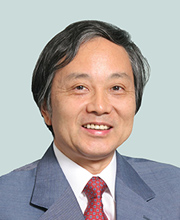
**Please note that following presentations were made based on information as of Nov. 2020, and some information might have been updated or altered since then.
Introduction

Ichikawa
In the Urban Strategy session, discussion has always been focused on four urban functions in order to reflect upon the future of cities: Future Living, Future Work, Future Mobility, and Future Entertainment. This time, however, the most significant event in such reflection is the interruption to urban activity caused as a result of COVID-19.
Trends in the number of confirmed infections and the effect of COVID-19 so far
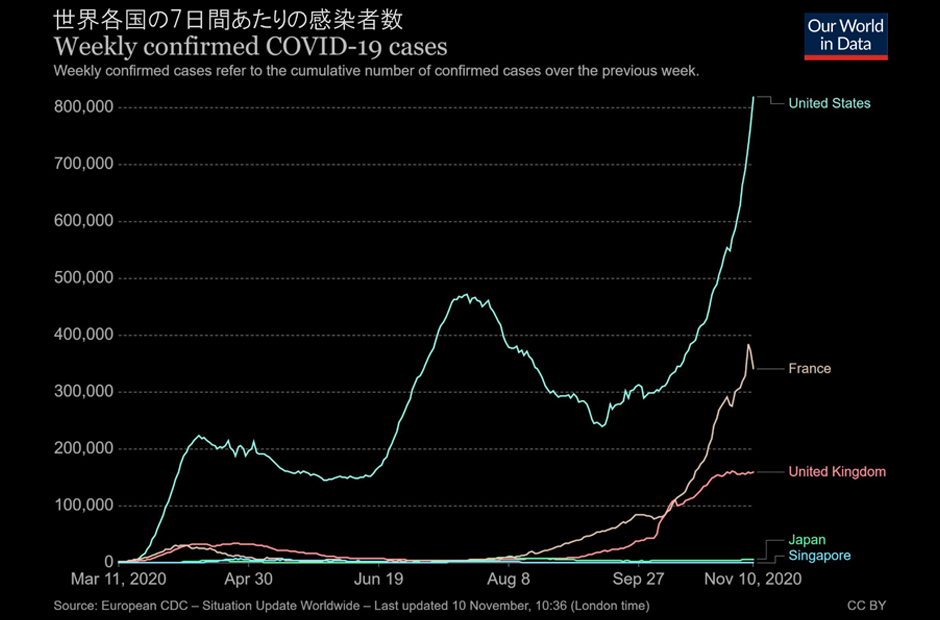
Looking at the transition of the number of infections per seven days, compared to the first and second waves, there has been a rapid and simultaneous worldwide increase in the number as of November 2020.
In Japan, from April 7 to May 25, 2020, the government issued a "state of emergency" for major cities, including Tokyo, requesting that people refrain from going out.
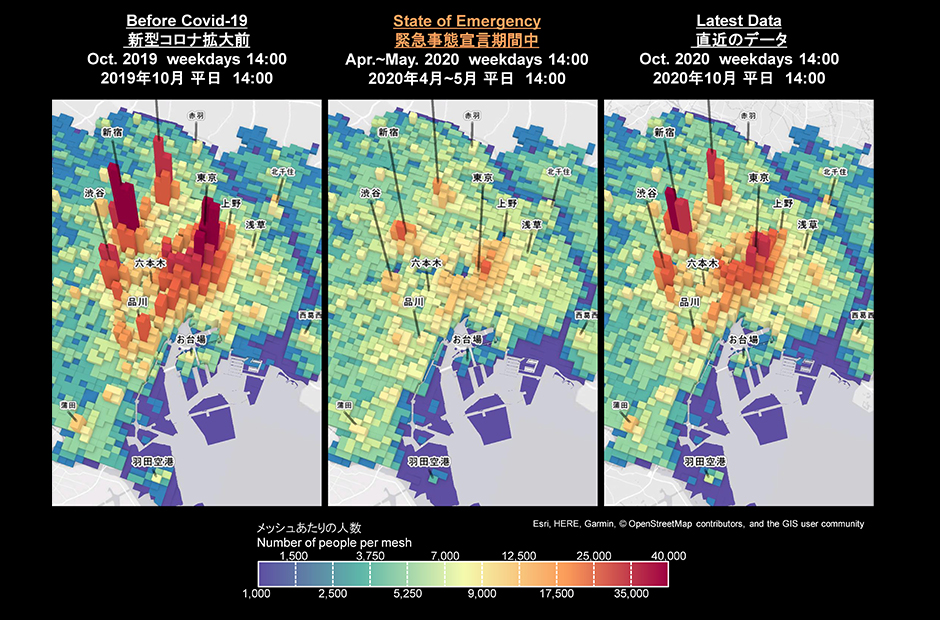
In order to investigate the impact of the declaration of a state of emergency on human flow, we visualized the flow of people at three points at 2:00 p.m. on weekdays: in October 2019, during the declaration of a state of emergency (April--May, 2020), and as of October 2020. Looking at this, it can be seen that the movement of people in October 2020 decreased compared to October 2019.
COVID-19 survey in six cities around the world
In order to explore the potential impact of the pandemic on the future of cities, we conducted a questionnaire survey during October--November, 2020 in six cities: London, Paris, Singapore, Tokyo, San Francisco, and New York.
Q:To what extent has the COVID-19 pandemic affected your lifestyle
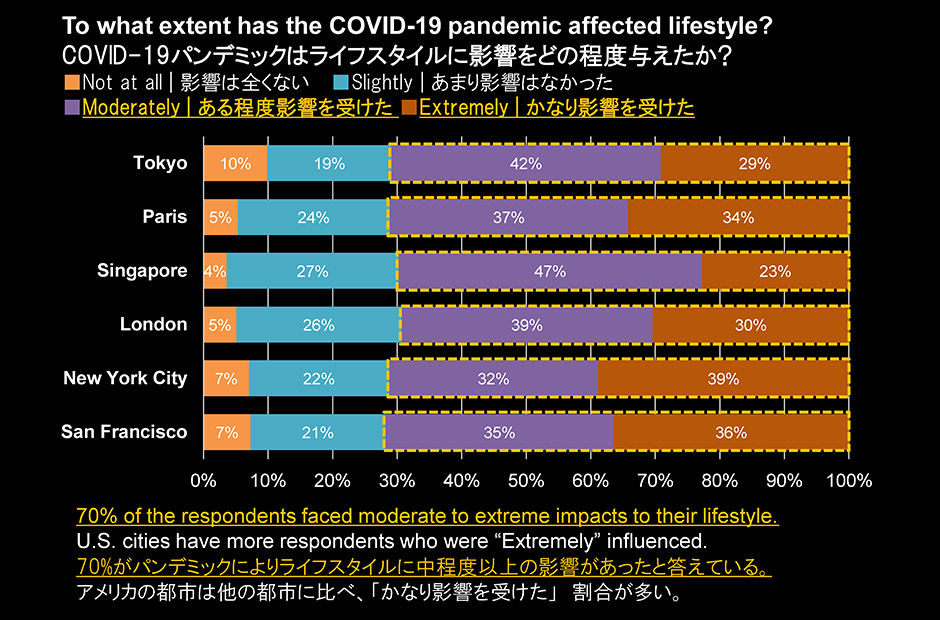
Among the four options ranging from “Not at all” affected to “Extremely” affected, the total percentage of "Moderately" affected and "Extremely" affected was about 70% in the six cities covered.
Q:How did your place of work change?
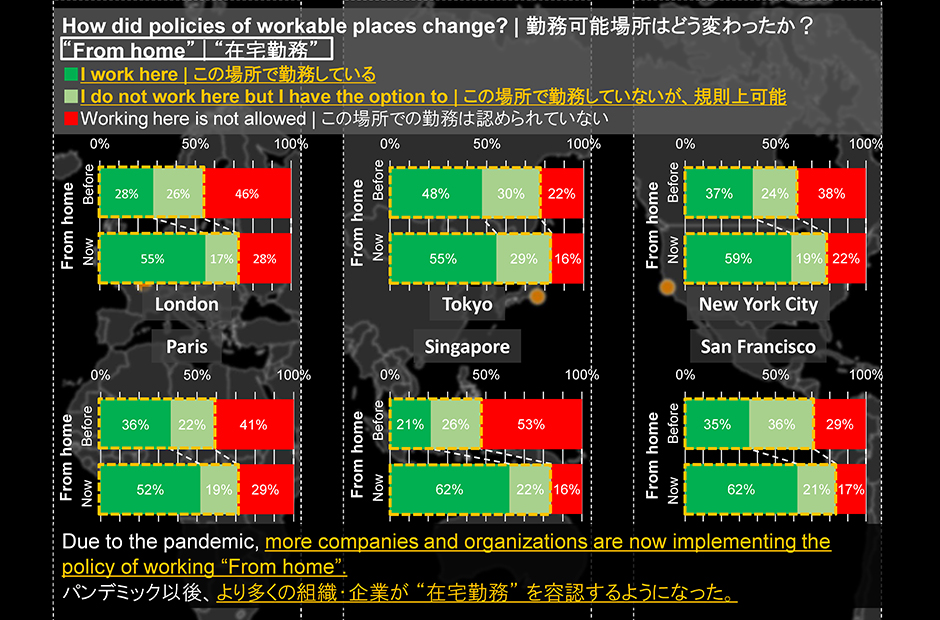
If you look at the changes in the policies of the workplaces of the companies or organizations to which respondents belong, you can see that the percentage permitting “From home" as a place of work is increasing.
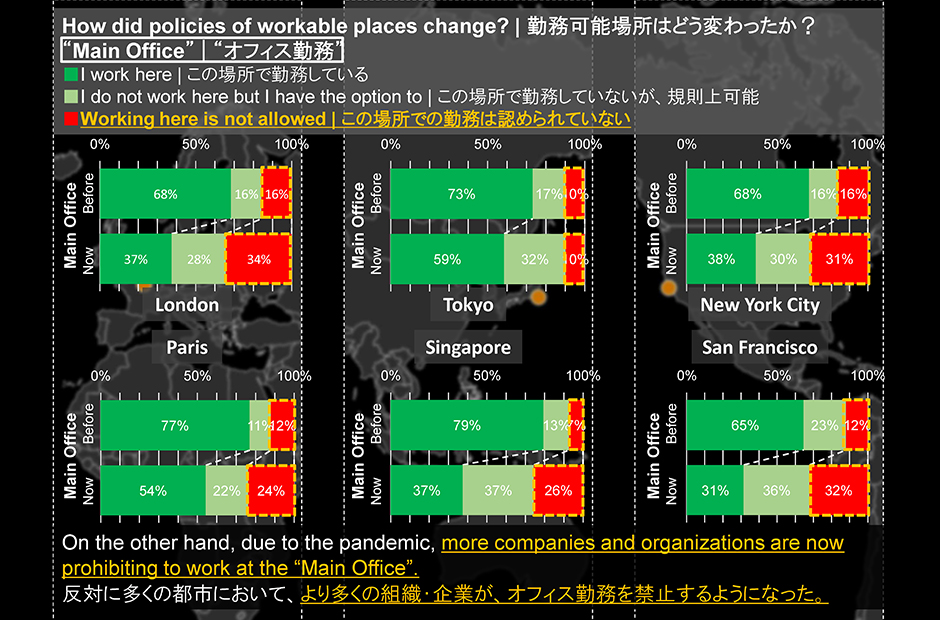
Conversely, it could be said that this is symbolic data, as the percentage of people who are not allowed to make “the office” their work place, or in other words, who are prohibited from working there, is increasing in London and Singapore. It can be seen that Tokyo does not comparably prohibit working in the office, and a large number of people continue to work there.
Q:Where do you work?
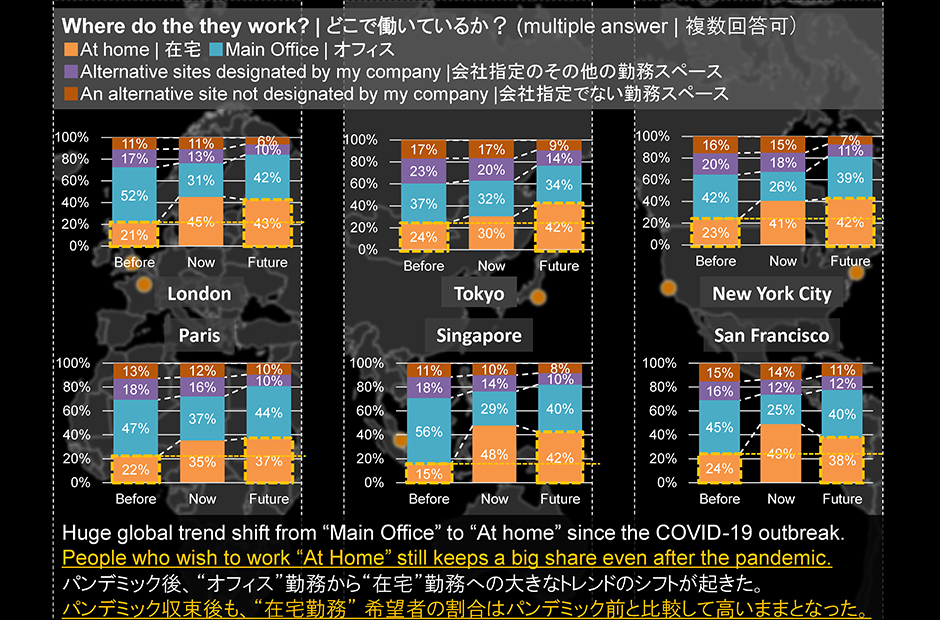
When respondents were asked about work locations Before (pre-pandemic), Now (present), and Future (post-pandemic,) the proportion working from home in New York was 23% Before, 41% Now, and 42% Future. Singapore, London, Paris, and San Francisco have similar results, with the proportion of working from home being comparable or slightly lower in Future compared to Now. Tokyo shows a different trend, with the proportion of working from home Now at 30% and the proportion of Future at 42%, and we can see that this will increase even further in the future after the pandemic subsides.
Q:Are you satisfied with telework? | Q: Does telework improve productivity?

In terms of satisfaction with telework (teleworking/remote working), Tokyo has the highest percentage of dissatisfaction among the six cities. New York had a relatively high percentage of telework satisfaction, but nearly half felt that their productivity had decreased and differing evaluations of telework were found for each city.
Q:How did your main mode of commuting change?
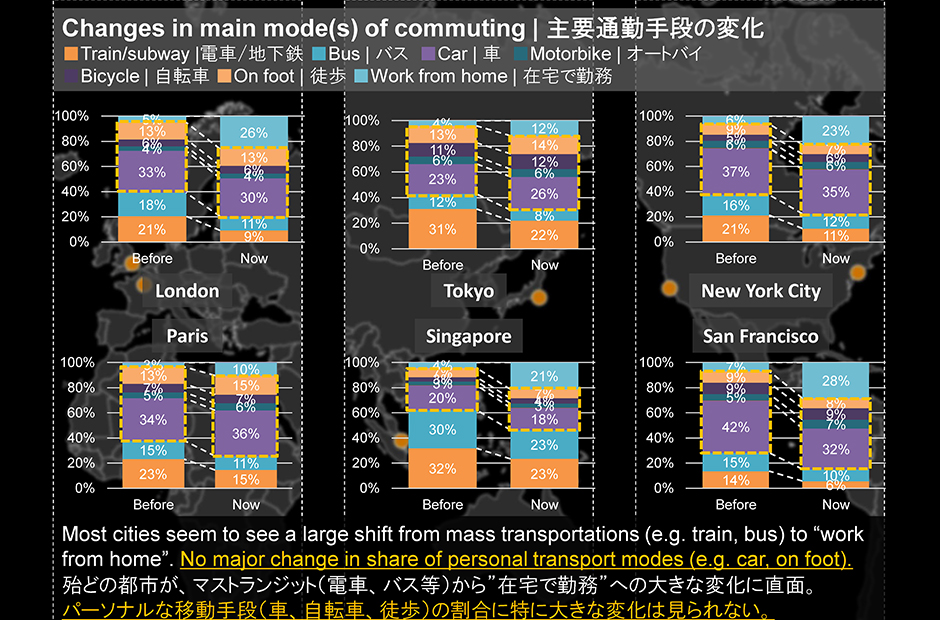
Subsequent to the pandemic, a topic of great debate was the mode of commuting. In Japan particularly, commuters often use railways and a large number commute in densely-packed conditions such as crowded trains. Such a situation is said to carry a high risk of infection, leading to the rights or wrongs of it often being called into question. In response to this, it was believed that modes of transportation such as walking and cycling would be more widely adopted. However, listening to people's opinions, it was found that the proportion of these has seen no dramatic change to date. Nevertheless, the number of train users has certainly decreased, and the proportion of train use has decreased by about 30% compared to before the pandemic.
Q:Has the amount of time you spend on your leisure activities changed compared to before the pandemic?
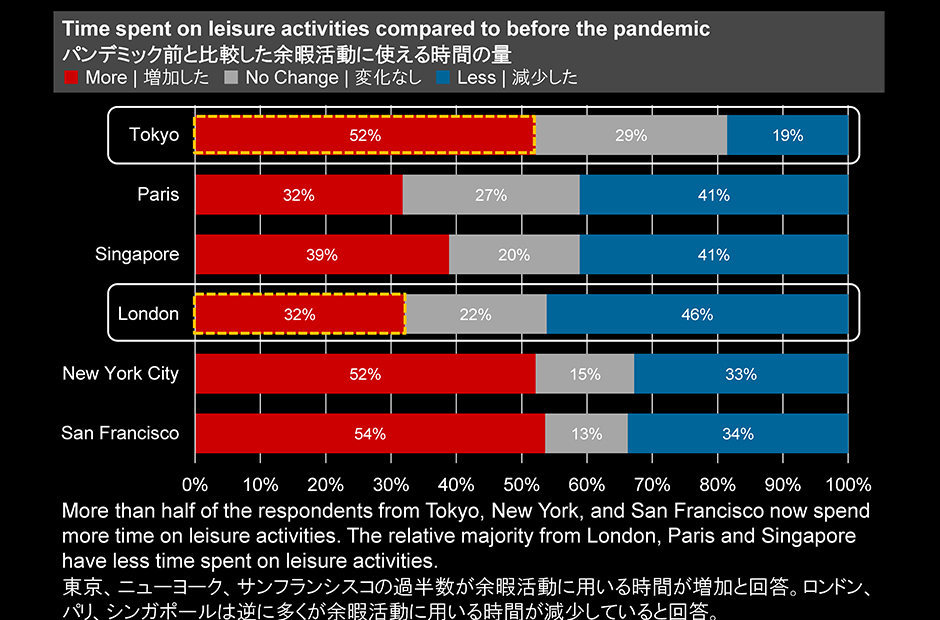
As for changes in leisure time, more than half of the respondents in Tokyo and New York said they had seen an increase in their leisure time, while only 32% in London said the same. As a result of the word “leisure” being used in the question, there is a possibility that the outcome changed due to the different impressions people may derive from the word, but it did result in a significant difference, as seen in London and New York.
Q:Where do you spend your free time?
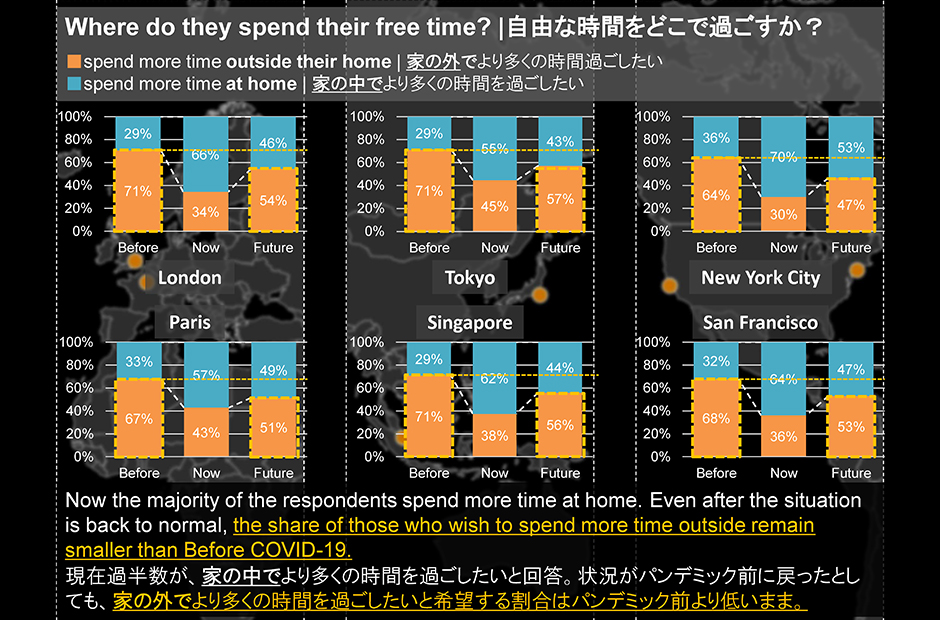
When asked where respondents would spend their free time Before (pre-pandemic), Now (now), and Future (the future post-pandemic), either at home or outside their home, Before had about 70% of respondents in Tokyo, New York, London and Singapore choosing to go out of their homes. At present, as a matter of course, the percentage of people who choose to go out of the home has dropped to less than half, or about 30%. Looking at the intentions of the Future after the pandemic ends, the percentage of people going out of the home will increase again. Nevertheless, it turns out that many people think that pre-pandemic levels will not be restored even on the assumption that there is an end to the pandemic.
Q:Who do you spend your free time with?
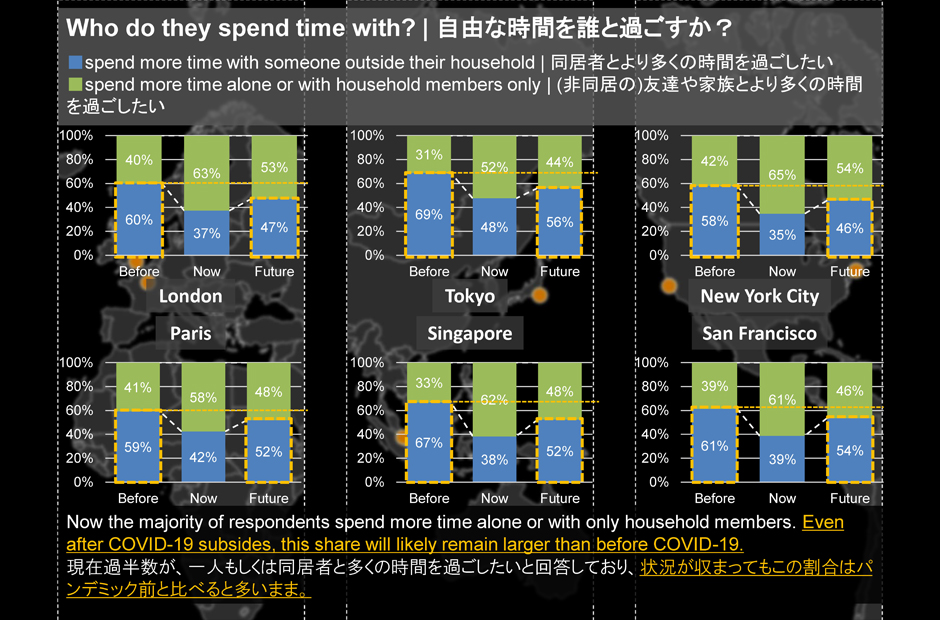
Respondents were asked in terms of who they would spend their free time with. In the past, various people were met with, irrespective of whether they were from the same household or not, but in response to the pandemic, there is an increasing desire to spend time with cohabitants, or with family. Regarding the intentions of Future, even if the pandemic ends, the proportion of people who want to spend time with non-residents will not return to pre-pandemic levels.
Q:How likely are you to move residence due to the impact of pandemic?
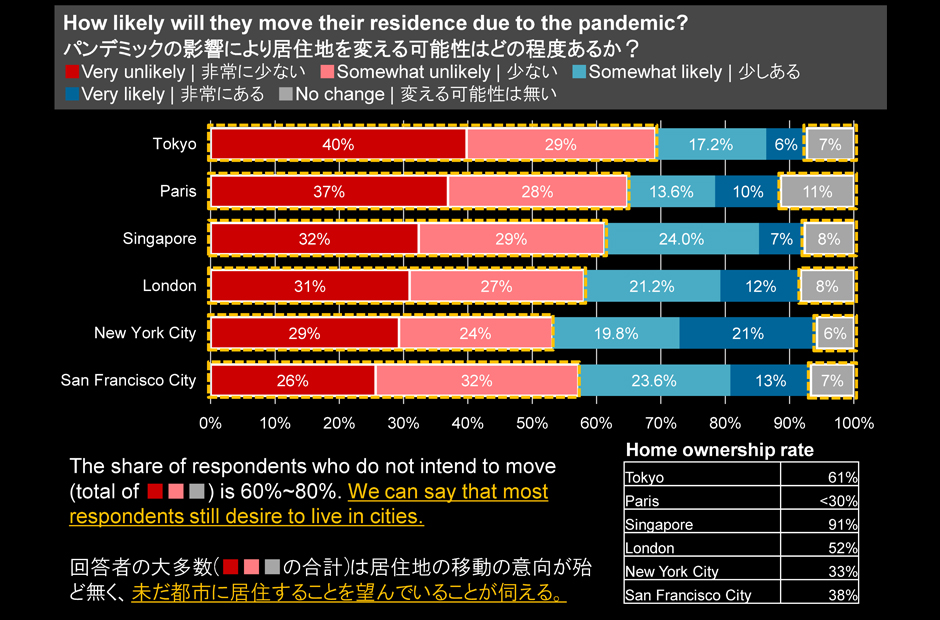
When asked how likely they are to move residence due to the impact of the pandemic, the percentage of respondents who said they were less likely to move (No change, Very unlikely, Somewhat unlikely) was the highest in Tokyo, with 76%, and the lowest in New York, with 53%. When looking at all six cities, 60-70% said that they had no intention of moving residence. However, conversely, about 40%, or in the case of New York, about 50% think it might be possible to move.
This is connected to the topic of what will happen to population concentration in large cities, and is a crucial question in considering post-pandemic planning.
Q: If you were to move residence, where would you go?
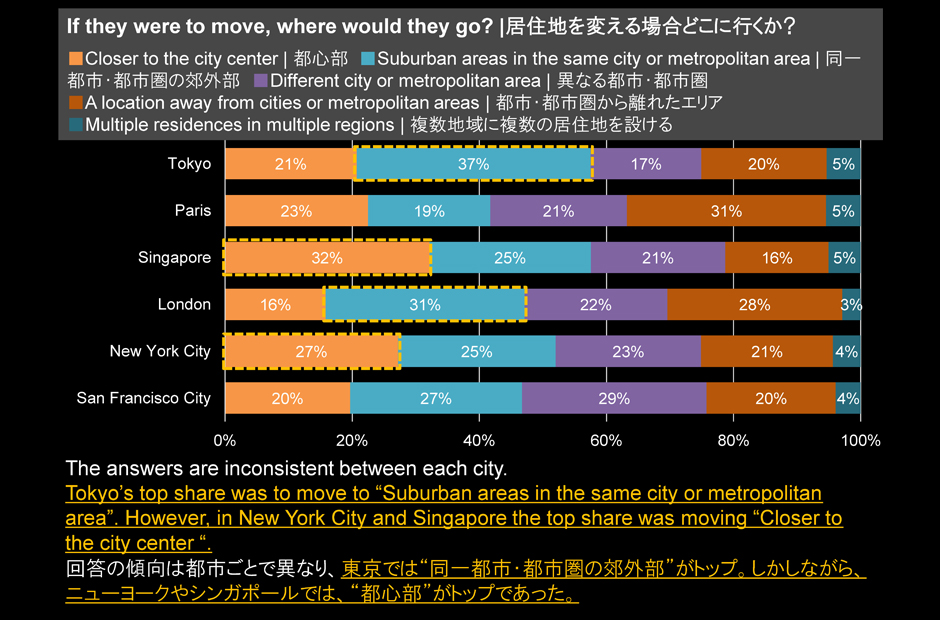
Respondents were asked where they would like to move to if they wanted to change their place of residence. What proves interesting is that a large proportion of Singapore and New York City residents said they want to move to the city center. On the other hand, Tokyo and London residents expressed a preference for moving out to the suburbs, revealing significant differences between the cities. What will become of the overconcentration in Tokyo in the future? Whether or not people actually leave the city will become clear after summer next year, when the pandemic finally ends.